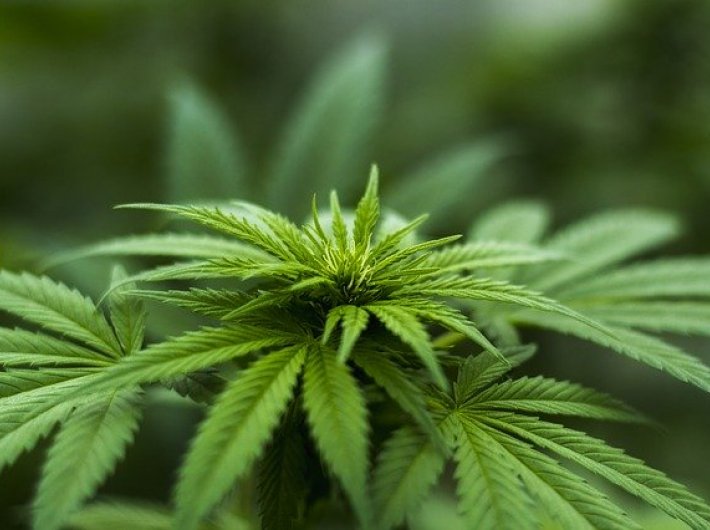Amid the trend in several countries of granting legal status to marijuana, a team of doctors from the Tata Memorial Centre, Mumbai, have called for more tests to find out its supposed benefits.
“It would be prudent to wait for studies which prove beyond doubt the advantages of marijuana over the existing drugs and also outweigh its side effects and addiction potential. Moreover, further legalization of marijuana should only be considered after evaluating its effects at places where it is already legally available,” concludes the study, published in the Indian Journal of Palliative Care in late August. The researchers are Akshat Malik, Khuzema Saifuddin Fatehi, Nandini N Menon, and Pankaj Chaturvedi, all from the Department of Head and Neck Oncology, Tata Memorial Centre.
Here is the link to the full report: http://www.jpalliativecare.com/article.asp?issn=0973-1075;year=2020;volume=26;issue=3;spage=369;epage=380;aulast=Malik
“In recent past, there has been a rush to legalize marijuana along with a lot of support for its medicinal uses. This review intends to discuss the medicinal uses of marijuana and its adverse effects based on the current available evidence. Furthermore, it discusses the impact of legalization of marijuana,” the researchers note. Methodologically, it was “a narrative review for which a thorough literature search was conducted on the Medline and PubMed databases. A detailed search of the Internet to find relevant information on webpages was also performed”.
As for results, they note: “High-quality evidence for the majority of medical indications of marijuana remains investigational. Most of the available literature compares it against placebos. Postlegalization usage of marijuana has increased.”
(What follows are edited excerpts from the research report.)
What is Marijuana? It is a drug derived from cannabis, which is a generic term which usually denotes the various psychoactive substances in Cannabis sativa as per the WHO. Cannabis can be divided into three main strains – sativa (gives a euphoric effect), indica (gives a sedating effect), and hybrid (features of both indica and sativa). Marijuana (C. sativa) is a drug of plant origin that contains more than 60 compounds known as cannabinoids.
In Sanskrit and other modern Indo-Aryan languages, Cannabis is referred to as ‘Bhang’. It intends to show how the use of Marijuana was propagated from one civilization to another. In India and Nepal, it has been used in an entheogen, a chemical substance that is used in a religious, shamanic, or spiritual context. Cannabis has historically been consumed in many different ways – smoking in the form of small pipes, bongs (portable versions of hookahs with a water chamber), and paper-wrapped joints or tobacco-leaf-wrapped blunts, and other items such as Cannabis tea, as a beverage, bhang.
As many as 160 million – about 4% of the world population in the age group of 15–64 years – are said to be consuming marijuana in some or the other form each year.
Marijuana has a long history of use for medicinal purposes. Literature is currently divided on the therapeutic uses of marijuana. The use of marijuana for medicinal purposes is promising; however, the research in this field is still primitive.
It may be used for the purpose of treating or alleviating the symptoms of several diseases. Its use is presently recommended by the local drug-controlling authority across various countries in certain conditions or diseases. Its use in various other conditions is currently investigational. This review intends to discuss the medicinal uses of marijuana and its adverse effects based on the current available evidence. Furthermore, it discusses the impact of legalization of marijuana on health as well as other aspects of life.
Adverse effects of marijuana
Marijuana is associated with various adverse effects like any other narcotic substance. Till date, no death due to marijuana poisoning has been reported. The severity of the adverse effects of marijuana is dependent on the duration and frequency of its use. The various adverse effects of marijuana are enlisted below.
* The International Classification of Diseases and the Diagnostic and Statistical Manual of Mental Disorders designate Cannabis as an addictive substance, with recognized Cannabis-related dependence disorders. Around 9% of the users, more significantly teenagers who try Cannabis, ultimately become addicts. Cannabis withdrawal syndrome is a known condition with symptoms such as irritability, sleeping difficulties, and dysphoria. A study showed that the relapse rates for marijuana addicts were as high as 71% at 6 months.
* Marijuana users are at an increased risk to develop chronic psychotic disorders (including schizophrenia). A study prospectively evaluated 2,437 young adults with or without a predisposition to psychosis.
* Marijuana smoking leads to exposure to a number of harmful by-products. Some of the carcinogens present in tobacco are present in Marijuana smoke as well. These include polycyclic hydrocarbons and benopyrenes.
International guidelines for medical use of marijuana
The framework for the development of the Cannabis program is based on the UN Single Convention on Narcotic Drugs of 1961. Although Cannabis was considered to be a softer drug, its widespread and frequent use made it a gateway to other substance abuse. Thus, it was decided to curb its use.
Marijuana use has been legalized in various countries such as the USA, Argentina, Canada, and Uruguay. Such use may be for recreational or medicinal purposes. Its use for recreational purposes is approved in various places, based on public demand, political motives, and the belief that among the various narcotics, Marijuana is the safest.
In India, Cannabis is the second most common substance to be abused, with close to 3 crore people using it. Dependence was seen in one out of every seven persons using it. About 2.2 crore individuals used Cannabis products such as bhang, ganja, and charas and about 1.3 crore people used illegal Cannabis products such as ganja and charas. The high-prevalence states in India were recorded as the following – Uttar Pradesh, Punjab, Sikkim, Chhattisgarh, and Delhi. Overall, about one in 11 Cannabis users suffered from Cannabis dependence, which could be counted as being in the category of problem Cannabis users. One in 16 users of bhang were dependent on Cannabis, whereas one in seven cases of ganja/charas users were Cannabis dependent, showing a significant difference in both the groups.
Conclusion
Although marijuana use has been legalized recently in several regions, high-quality evidence for the majority of its medical indications remains investigational. Most of the available literature compares it against placebos, and it would be prudent to wait for studies which prove beyond doubt the advantages of Marijuana over the existing drugs and also outweigh its side effects and addiction potential. Moreover, further legalization of Marijuana should only be considered after evaluating its effects at places where it is already legally available.
(Please refer to the original report for footnotes, references, and other details.)



